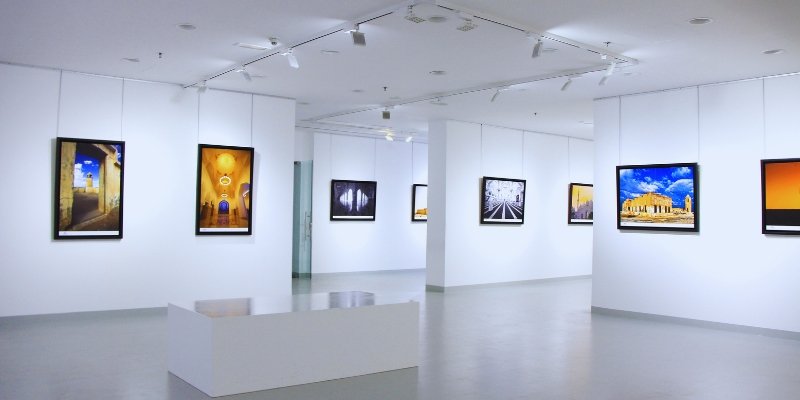Establishing a Contemporary Art Gallery Business in Singapore: A Guide for Aspiring Entrepreneurs

Singapore’s vibrant art scene has gained international recognition, making it an attractive destination for aspiring entrepreneurs looking to establish a contemporary art gallery business. With a diverse range of artists and a growing appreciation for contemporary art, the city-state offers a unique opportunity to tap into this dynamic market. This guide outlines the essential steps and considerations for starting your own contemporary art gallery in Singapore.
Reasons to Start a Contemporary Art Gallery Business

Thriving Art Scene: Singapore is home to numerous art fairs, exhibitions, and cultural events, fostering a rich environment for contemporary art. This thriving scene creates a demand for galleries that can showcase new and innovative works.
Cultural Hub: As a cultural melting pot, Singapore attracts artists and art enthusiasts from around the world. Establishing a contemporary art gallery allows you to contribute to this vibrant community while connecting with a diverse audience.
Investment Potential: The contemporary art market has shown significant growth over the years, making it a potentially lucrative investment. Art pieces can appreciate in value, offering financial returns alongside aesthetic enjoyment.
Detailed Steps to Establish a Contemporary Art Gallery Business

Market Research: Conduct comprehensive market research to understand the preferences of art collectors and enthusiasts in Singapore. Identify trends, potential competitors, and gaps in the current market to tailor your offerings effectively.
Business Plan: Develop a detailed business plan that outlines your vision, target audience, marketing strategy, and financial projections. This plan will serve as a roadmap for your contemporary art gallery business and is crucial for securing funding.
Legal Requirements: Register your business with the Accounting and Corporate Regulatory Authority (ACRA). Depending on your gallery’s operations, you may need to obtain additional licenses or permits related to art exhibitions and sales.
Location Selection: Choose a strategic location for your gallery that is easily accessible and attracts foot traffic. Areas known for their artistic community or cultural significance can enhance visibility and draw in visitors.
Gallery Design and Setup: Create an inviting and functional space that complements the art you plan to showcase. Invest in proper lighting, display equipment, and a layout that enhances the viewing experience.
Artist Collaboration: Build relationships with contemporary artists to feature their work in your gallery. Consider hosting exhibitions, artist talks, and workshops to engage the community and promote their talent.
Marketing and Promotion: Develop a marketing strategy that includes online and offline channels. Leverage social media, art fairs, and collaborations with local businesses to increase awareness of your gallery and attract visitors.
Challenges and Considerations for Both Local and Foreign Entrepreneurs

Starting a contemporary art gallery business in Singapore comes with its own set of challenges:
Regulatory Compliance: Navigating the regulatory landscape can be complex, especially for foreign entrepreneurs. Ensure you understand the local laws and regulations related to art sales and exhibitions.
Cultural Sensitivity: Understanding the cultural context of the local art scene is crucial. Tailor your gallery’s offerings to resonate with the diverse backgrounds of Singapore’s residents.
Competition: The art gallery market in Singapore is competitive. Differentiate your gallery by focusing on unique themes, emerging artists, or specific art movements to attract a loyal customer base.
Financial Management: Managing finances effectively is essential for sustainability. Monitor expenses, pricing strategies, and revenue streams to ensure your gallery remains profitable.
Financial Planning Aspects

Establishing a contemporary art gallery business requires careful financial planning:
Startup Costs: Estimate your startup costs, including rent, renovations, marketing, and initial inventory. Having a clear understanding of your financial needs will help you secure funding.
Operational Expenses: Prepare a budget for ongoing expenses such as staff salaries, utilities, and maintenance. Regularly review your financial performance to make informed decisions.
Revenue Streams: Diversify your revenue streams by offering services such as art consultations, workshops, and events. Consider hosting private viewings or collaborating with corporate clients for special exhibitions.
Insurance: Obtain insurance coverage to protect your gallery against potential risks, including theft, damage to artwork, and liability claims.
Conclusion
Establishing a contemporary art gallery business in Singapore is an exciting opportunity to immerse yourself in a thriving creative community while pursuing your entrepreneurial dreams. By understanding the market, navigating challenges, and planning financially, you can create a successful gallery that showcases the best of contemporary art.
If you are ready to take the next step in your entrepreneurial journey, contact Company Formation Specialist today. We offer expert guidance and support to help you establish your contemporary art gallery business in Singapore, ensuring you are well-equipped to succeed in this dynamic industry.
Frequently Asked Questions
1. What are the initial steps to start a contemporary art gallery in Singapore?
Answer: Begin by conducting market research, creating a business plan, registering your business with the Accounting and Corporate Regulatory Authority (ACRA), and selecting a suitable location.
2. Do I need a license to operate an art gallery in Singapore?
Answer: Yes, aside from business registration, you may need specific permits for exhibiting and selling art, depending on your business model and activities.
3. What are the benefits of starting a contemporary art gallery in Singapore?
Answer: Singapore has a vibrant art scene with a growing demand for contemporary art, a diverse audience, and significant investment potential in the art market.
4. What are the typical costs involved in setting up an art gallery?
Answer: Startup costs include rental fees, renovation, initial inventory, marketing expenses, and gallery setup. Ongoing expenses cover staff salaries, utilities, and maintenance.
5. How can I attract visitors to my contemporary art gallery?
Answer: Use online and offline marketing strategies, collaborate with local businesses, leverage social media, and participate in art fairs and cultural events.
6. Is it challenging for foreign entrepreneurs to open an art gallery in Singapore?
Answer: Foreign entrepreneurs may face challenges in navigating regulatory requirements and understanding cultural sensitivities, but proper planning can ease the process.
7. What are the revenue streams for a contemporary art gallery?
Answer: Aside from selling art, galleries can offer services like art consultations, private viewings, workshops, and event hosting to diversify revenue.
8. What insurance is recommended for an art gallery?
Answer: Insurance for art galleries should include coverage for theft, artwork damage, and liability claims to protect against potential risks.
9. How can I find artists to collaborate with for my gallery?
Answer: Building relationships with emerging artists, attending art exhibitions, and connecting with local art schools can help find artists for collaboration.
10. What are some strategies for managing finances effectively in an art gallery business?
Answer: Regularly monitor expenses, manage cash flow, diversify revenue sources, and review financial performance to ensure sustainability.

